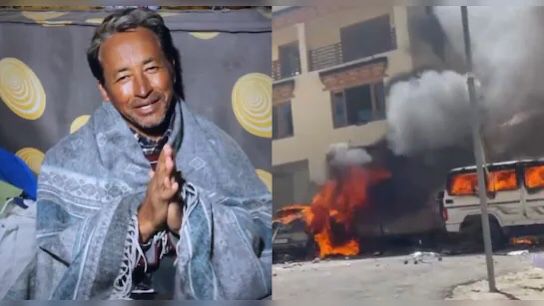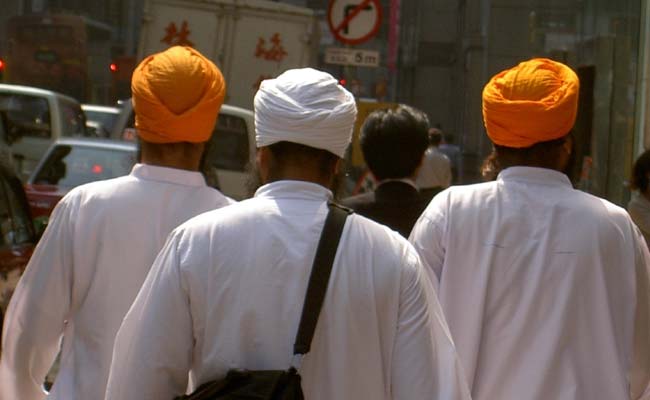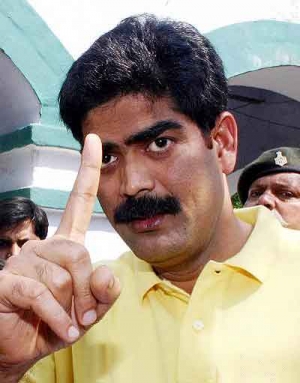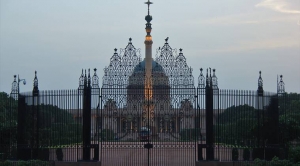How Sonam Wangchuk’s Rhetoric Appears to Have Fanned the Flames in Leh

Leh | 25 September 2025 Leh — The peaceful tourist haven of Ladakh has been shaken by violent street clashes that left four people dead and about 45 wounded on 24 September. Authorities and onlookers point to a steady stream of provocative speeches and viral clips from Sonam Wangchuk — portrayed in the media as a “climate activist” and education campaigner — as a key factor that appears to have inflamed local tensions. Viral footage shows tips for masked protests In recent weeks several short videos featuring Wangchuk have circulated widely on social media. In one clip he is filmed advising demonstrators to mask their faces and don hoodies before taking to the streets — advice commonly associated with concealment during confrontations. Wangchuk is himself seen wearing a hoodie and mask in that clip, a detail critics say deepens doubts about his intentions. Publicly questioning the strength of India’s soldiers at the border In another widely shared recording, Wangchuk makes sweeping claims about the state of India’s armed forces in frontier regions. He names frontline regiments and suggests their morale is compromised — even alleging some are being lured to foreign armies. Such assertions, made in a sensitive border area, have alarmed many who say they undermine confidence in the military and risk creating suspicion among young locals. Calling for an “Arab Spring”-style upheaval Perhaps most controversially, Wangchuk is seen invoking the Arab Spring. In one clip he reportedly says he would dedicate himself to removing the government if demands are not met, and points to the uprisings in Libya, Yemen and Syria as models that toppled regimes. Observers and officials say glorifying those violent outcomes risks encouraging a revolution-minded mindset rather than peaceful civic engagement. Comparisons with neighbouring regions that stoke resentment Other recordings show Wangchuk drawing comparisons between Ladakh and neighbouring territories — pointing to assemblies in Skardu and Baltistan or autonomous regions in China — and implying Ladakh is denied similar rights. Critics argue such comparisons are misleading, risk distorting local perceptions, and may be deliberately engineered to foster frustration against the state. Praising recent regime-change protests in the region A video dated 10 September shows Wangchuk appearing to praise protest movements in Nepal, Bangladesh and Sri Lanka, asking locals whether they might bring about similar change in Ladakh. He also reportedly lauded Gen Z activists in Nepal, urging Ladakhi youth to emulate them. Officials say repeated statements of that kind have been used to mobilise and embolden young protesters. International contacts add to the controversy Reports and photographs circulating online point to Wangchuk’s international meetings, including a reported encounter with Nobel laureate Muhammad Yunus at the British High Commission in February 2020. His trip to Pakistan in February 2025 is also being flagged by critics as further evidence of worrying external engagements. These connections have been seized on by detractors to question his motives and alliances. The outbreak of violence — a tipping point The violent events of 24 September — stone-pelting, vehicles set alight and clashes with police — were the immediate, bloody consequence. Shops shut early, residents fled the streets, and the city’s usual calm turned to fear. Authorities and some local voices say the unrest did not spring up overnight but was the culmination of months of agitation and inflammatory messaging. Beyond climate activism: a national security concern, say critics Wangchuk is commonly introduced to audiences as an environmental campaigner and education reformer. But critics point to his recent statements — from questioning the army’s readiness to invoking revolutionary change — and argue his rhetoric has crossed from protest into provocation, with potential national security implications in a strategically sensitive region. What officials and citizens want now As Leh begins to pick up the pieces, officials are investigating the protests’ organisers and the role of outside influencers. Local residents have expressed a mix of grief, anger and bewilderment: grief for the dead, anger at the disruption, and concern that sustained provocation could pull more youth into dangerous confrontations. Many call for calm, accountability and a return to constructive dialogue rather than incendiary rhetoric. Sonam Wangchuk’s Words and Leh’s Unrest Leh’s peace has been shattered by violent protests that left four dead and dozens injured. At the center of the storm is Sonam Wangchuk, whose fiery speeches and viral videos appear to have stoked resentment among locals. From urging protesters to hide their identities, questioning the morale of India’s soldiers, glorifying the Arab Spring, to praising regime-change movements in neighboring countries — his rhetoric has gone far beyond “activism.” What was once a tourist’s paradise is now on edge, with officials warning that months of calculated provocation have pushed Ladakh’s youth into dangerous confrontation with the State.




